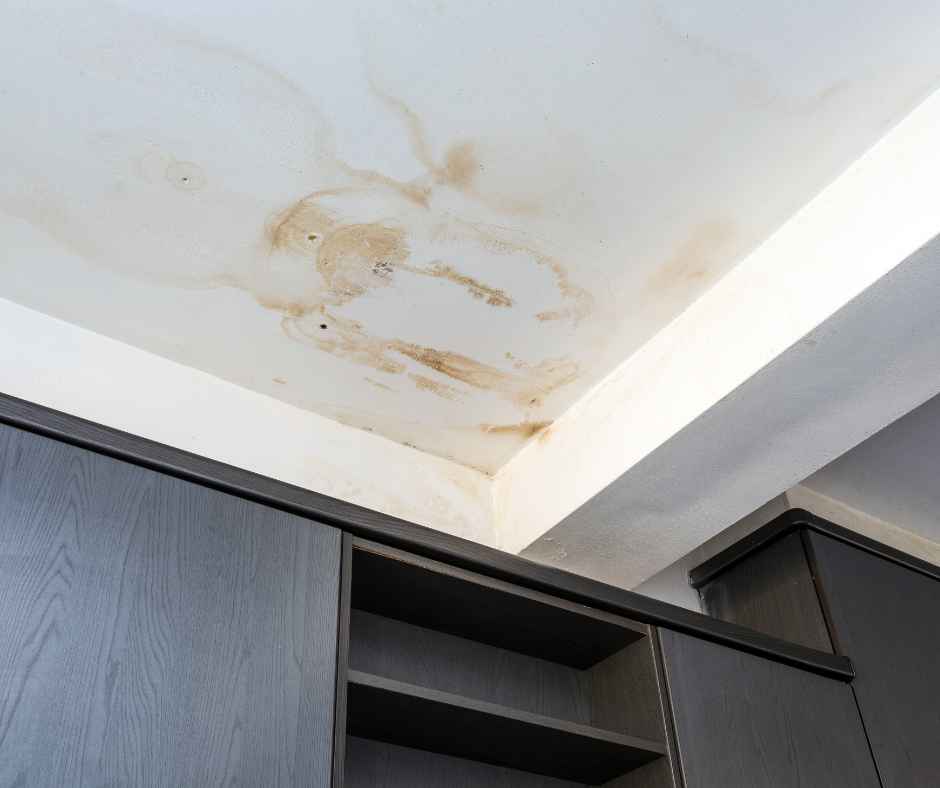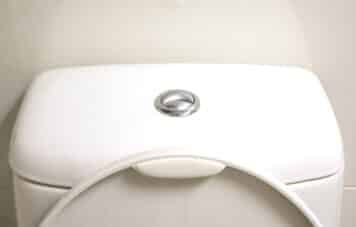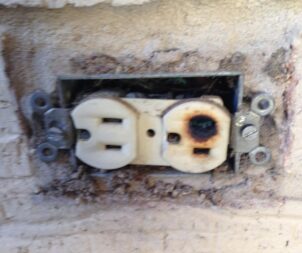
Older homes across the Northeast are filled with charm and character, but many also hide aging plumbing systems behind their walls. Over time, small leaks can develop in older pipes, joints, or fixtures, often going unnoticed until they cause significant damage. What may start as a slow drip under a sink or a damp spot on the ceiling can quickly become a major plumbing problem that affects the entire home.
Ignoring a minor leak might seem harmless, but even small amounts of water can cause lasting harm. From structural damage to rising utility bills, hidden leaks can lead to repairs that cost thousands of dollars if not addressed early.
At Harris Plumbing, Heating, Air & Electric, we help homeowners across the Northeast detect, repair, and prevent plumbing leaks before they cause serious damage. Knowing the warning signs and taking action quickly can protect your home’s structure, save you money, and maintain the value of your property.
Why Older Homes Are More Prone to Leaks
Many older homes in the Northeast still rely on plumbing systems that were installed decades ago. While these materials were durable for their time, years of use and exposure to changing temperatures eventually take their toll. Even small shifts in pressure or seasonal weather can cause tiny cracks, loose joints, or corrosion that lead to leaks.
Several factors make older homes more likely to develop plumbing leaks:
- Aging materials: Older pipes made from galvanized steel, cast iron, or copper are more likely to corrode and weaken over time.
- Foundation settling: Shifting soil and natural settling can strain pipes and create gaps in joints or fittings.
- Temperature fluctuations: Freezing winters in the Northeast put stress on plumbing, especially in uninsulated areas like basements and crawl spaces.
- Previous repairs or additions: Older homes often have mixed plumbing materials or DIY fixes that may not meet current standards.
These conditions make even small leaks dangerous, as they can worsen quietly behind walls, under floors, or inside ceilings. Without regular inspections or maintenance, what seems like a minor drip can turn into a widespread plumbing failure.
Harris Plumbing, Heating, Air & Electric recommends routine inspections for older homes to catch early warning signs before they escalate into expensive water damage or system replacements.
How Small Leaks Turn Into Big Problems
A small plumbing leak may seem like a minor inconvenience, but even a slow drip can cause serious damage over time. Water has a way of finding paths through walls, floors, and ceilings, often spreading farther than expected. What starts as a small wet spot or steady drip can soon create mold growth, wood rot, and structural decay.
Here are a few ways that small leaks can turn into big problems:
- Structural damage: Leaking water weakens wood framing, drywall, and flooring. Over time, this can compromise the stability of your home.
- Mold and mildew growth: Damp areas provide the perfect environment for mold, which can spread quickly and impact indoor air quality.
- Electrical hazards: When water seeps near wiring or outlets, it can create dangerous short circuits or fire risks.
- Foundation issues: Persistent leaks can saturate the ground around your home, leading to foundation cracks or shifting.
- Increased utility costs: Even a small, continuous leak wastes hundreds of gallons of water each month, adding to your utility bill.
Older homes are especially vulnerable because their plumbing systems are often hidden behind thick plaster walls or under layers of flooring. Leaks can go unnoticed for weeks or months until the damage becomes visible.
By scheduling professional leak detection with Harris Plumbing, Heating, Air & Electric, homeowners can identify and repair problems early, saving thousands in future repair costs and protecting the integrity of their home.
The Hidden Signs of a Plumbing Leak
Not all plumbing leaks are obvious. In fact, the most damaging ones are often hidden behind walls, beneath floors, or inside ceilings. Older homes are especially prone to concealed leaks because of aging materials, outdated plumbing layouts, and limited insulation around pipes. Recognizing the subtle warning signs early can prevent costly damage later.
Watch for these common indicators of a hidden plumbing leak:
- Unexplained water stains: Brown or yellow spots on walls, ceilings, or floors often mean water is seeping through from a hidden source.
- Musty or damp odors: Persistent moisture encourages mold growth, which leaves behind a distinct smell even when no water is visible.
- Peeling paint or wallpaper: Moisture trapped behind walls causes bubbling, warping, or soft drywall.
- Unusually high water bills: A sudden spike in usage usually points to a leak somewhere in the system.
- Soft or sagging floors: Water leaks under flooring can cause boards or tiles to loosen over time.
- Mold growth in unusual places: Mold around baseboards, ceilings, or non-shower walls can signal hidden moisture problems.
If you notice any of these warning signs, it is important to act quickly. Professional plumbers use tools like moisture meters, infrared cameras, and acoustic leak detectors to locate leaks without damaging walls or floors.
The licensed experts at Harris Plumbing, Heating, Air & Electric specialize in finding and repairing hidden leaks in older Northeastern homes. Fast detection prevents minor leaks from turning into major plumbing and structural repairs.
The True Cost of Ignoring a Leak
It is easy to underestimate the damage that a small plumbing leak can cause. What starts as a slow drip or minor stain can quietly spread through your home’s structure, leading to expensive repairs and health concerns. Ignoring even the smallest leak can multiply the cost of fixing the problem later.
Here are some of the most common expenses homeowners face when leaks go unchecked:
- Water damage restoration: Repairing soaked drywall, insulation, or flooring can cost hundreds or even thousands of dollars, depending on how long the leak has been active.
- Mold removal: Mold thrives in damp areas, and professional remediation is often required once it spreads through walls or air ducts.
- Structural repairs: Water can weaken support beams, subfloors, and ceilings, resulting in costly reconstruction.
- Higher utility bills: A continuous leak wastes water every day, which quickly adds up on your monthly statement.
- Plumbing system replacement: In older homes, ignoring small leaks may eventually require full pipe replacement if corrosion spreads.
A proactive repair from Harris Plumbing, Heating, Air & Electric is always more affordable than waiting until the damage becomes severe. Professional leak detection and early repairs not only protect your budget but also preserve your home’s long-term safety and comfort.
How to Prevent Leaks and Protect an Older Plumbing System
Preventing plumbing leaks in an older home starts with regular attention and maintenance. Even the strongest plumbing systems need care to stay in good condition, especially in the cold, damp climate of the Northeast. Taking small steps now can help you avoid large repairs later.
Here are some effective ways to protect your home’s plumbing system:
- Schedule annual inspections: A professional plumber can identify early signs of corrosion, loose fittings, or slow leaks before they cause damage.
- Monitor water pressure: High water pressure puts unnecessary strain on older pipes. Installing a pressure regulator helps prevent leaks at joints and valves.
- Replace worn fixtures and hoses: Rubber washer hoses on washing machines or dishwashers can weaken over time. Replacing them with braided stainless-steel hoses prevents sudden bursts.
- Insulate exposed pipes: Cold temperatures can cause older pipes to contract and expand, increasing the risk of cracking. Insulation helps maintain a steady temperature and protects against freezing.
- Install a smart leak detector: Modern leak detection systems send alerts to your phone when moisture is detected, giving you time to act before damage spreads.
- Address small leaks immediately: Even the tiniest drip can grow into a serious issue if ignored. Early repairs save time, water, and money.
Homeowners who keep up with preventive maintenance experience fewer emergencies and lower repair costs. The expert team at Harris Plumbing, Heating, Air & Electric provides professional plumbing inspections and maintenance plans designed specifically for older Northeastern homes.
Protect Your Home and Budget with Harris Plumbing, Heating, Air & Electric
Small plumbing leaks may seem harmless, but they can silently create serious problems inside your home. From structural damage to rising water bills, the longer a leak goes unaddressed, the more it costs to repair. For homeowners in older Northeastern houses, where plumbing systems have already stood the test of time, quick action is essential to avoid long-term damage.
At Harris Plumbing, Heating, Air & Electric, our licensed technicians specialize in finding and fixing leaks before they cause costly repairs. We use advanced diagnostic tools to locate hidden leaks, assess your plumbing system, and make reliable repairs that protect your home for years to come.
Do not wait until a small drip turns into a major disaster. Schedule a professional plumbing inspection today with Harris Plumbing, Heating, Air & Electric and keep your home dry, safe, and worry-free.
Frequently Asked Questions About Plumbing Leaks in Older Homes
How can I tell if a plumbing leak is hidden behind my walls?
Hidden leaks often reveal themselves through subtle signs like water stains, bubbling paint, or musty odors. If you notice an unexplained increase in your water bill or hear dripping sounds, it is best to schedule a leak detection service with Harris Plumbing, Heating, Air & Electric to locate the source safely and accurately.
Are small leaks really worth repairing right away?
Yes. Even a slow drip can lead to structural damage, mold growth, and high utility bills. The cost of early leak repair is always lower than the cost of repairing walls, floors, or ceilings damaged by long-term water exposure.
What types of pipes are most likely to leak in older homes?
Older homes in the Northeast often have galvanized steel, copper, or cast iron pipes. These materials corrode or rust over time, increasing the risk of small leaks that grow larger if ignored. Replacing outdated plumbing with modern materials like PEX or PVC can significantly reduce future leaks.
How often should I have my plumbing inspected?
For older homes, annual plumbing inspections are recommended. Regular maintenance allows professionals to detect early signs of corrosion, loose fittings, or water pressure issues before leaks develop.
Does homeowners insurance cover water damage from leaks?
Most policies cover sudden or accidental leaks, but damage from long-term or neglected leaks is usually excluded. That is why preventive maintenance and prompt repairs from Harris Plumbing, Heating, Air & Electric are so important to protect both your home and your insurance coverage.




